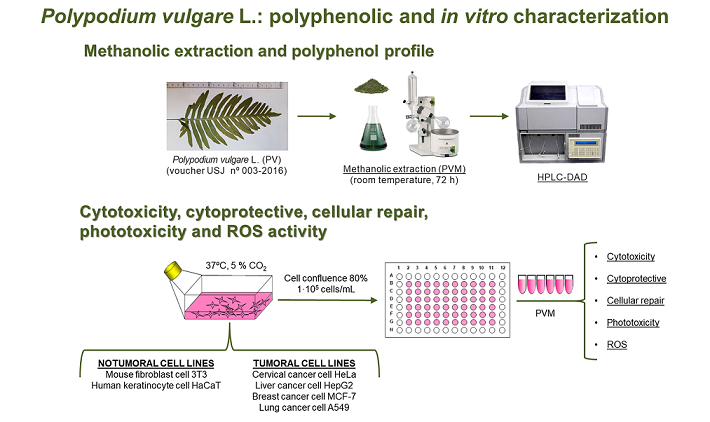Pteridophytes, represented by ferns and allies, are an important phytogenetic bridge between lower and higher plants (gymnosperms and angiosperms). Ferns have evolved independently of any other species in the plant kingdom being its secondary metabolism a reservoir of phytoconstituents characteristic of this taxon. The study of the possible medicinal uses of Polypodium vulgare L. (Polypodiaceae), PV, has increased particularly when in 2008 the European Medicines Agency published a monograph about the rhizome of this species. Thus, our objective is to provide scientific knowledge on the methanolic extract from the fronds of P. vulgare L., one of the main ferns described in the Prades Mountains, to contribute to the validation of certain traditional uses. Specifically, we have characterized the methanolic extract of PV fronds (PVM) by HPLC-DAD and investigated its potential cytotoxicity, phototoxicity, ROS production and protective effects against oxidative stress by using in vitro methods. Our results show that PVM is not cytotoxic against the different cell lines assessed, but we found potential cytoprotective and cellular repair activity in 3T3 fibroblast cells. This biological activity could be attributed to the high content of polyphenolic compounds; thus, this extract is positioned as a potential candidate for pharmaceutical uses.

